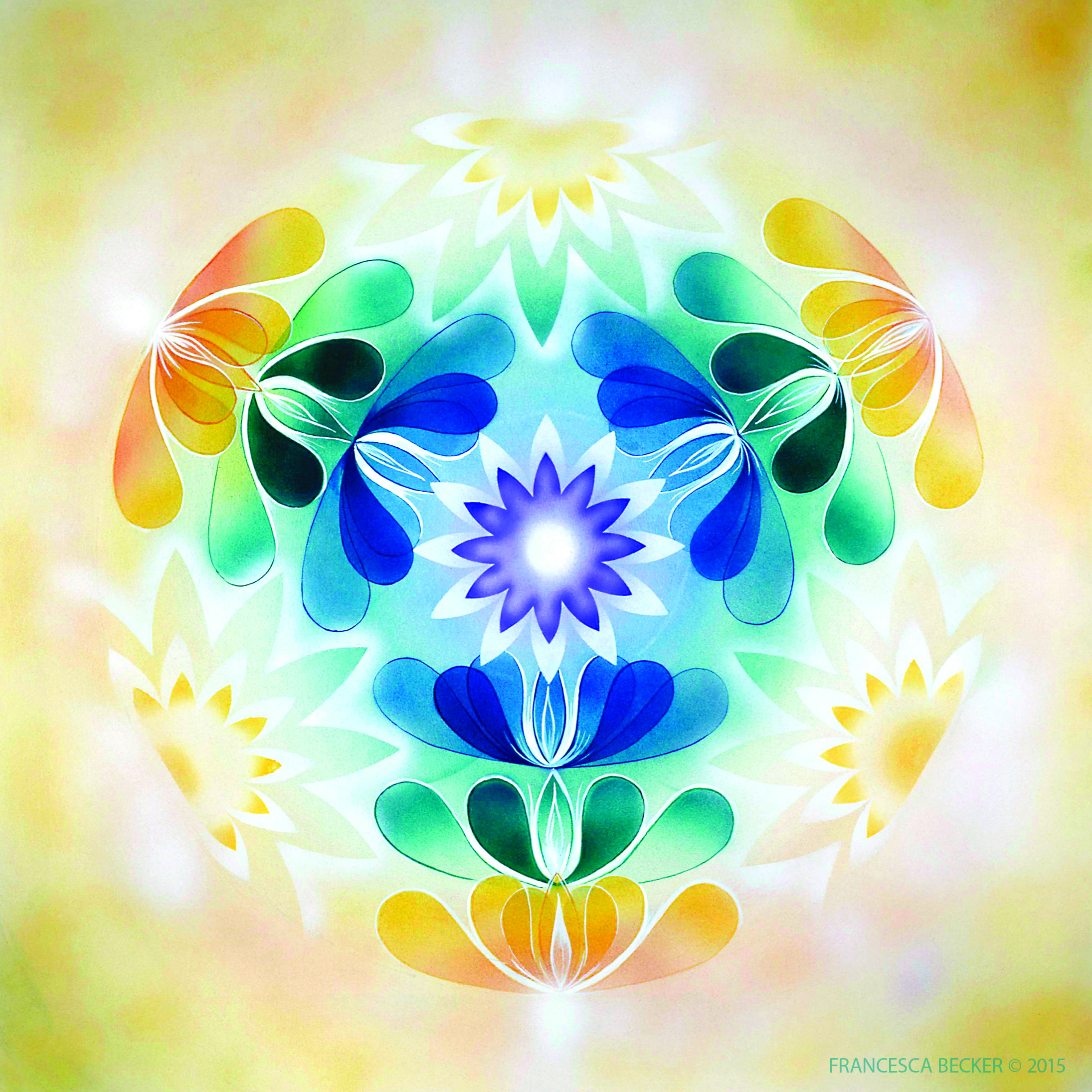A Contemporary Mandala is a synthesis of various ancient and contemporary spiritual and psychological healing modes, expressing in both Universal archetypal symbols (and symbols of a more personal nature), the aspirations of our being. It can be a manifestation of our efforts to remember Wholeness of Spirit, as we are constantly viewing and working with the circle and its centre.
It can be an outward reflection of our deep striving to integrate multiplicity into oneness – a reflection of the Macrocosm of planetary movement within ourselves.
In ancient times, the priests/ priestess of a temple would greet those wishing to heal themselves, and together they would sit in sympathy, the aspirant sharing all manner of heartfelt concerns hopes, needs, or desires.
Over a period of time the Mandala would evolve; usually on the ground as a sand painting or in the Tibetan manner of the artists’ using coloured sand gently placed in a pattern on some small raised table.
At the conclusion of the process, that priest and the “healed one” together would wipe the Mandala across with their hands or blowing upon it, returning the individual grains of sand back into the greater earth. This was a symbolic gesture reminding us of the impermanence of life and the acceptance of “all” back into its correct element. Depending upon the symbology and colours used, these works may catalyze a trans- forming of the heart/mind by stabilizing, strengthening and empowering at the heart level.
Contemporary Mandalas can be used as “shields”, or as screens through which to view one’s life, or perhaps as a statement of who one wishes to be or who one thinks one is, where one has been and/or hopes to become. A “holding frame,” so to speak. Contemporary Mandalas can be self nurturing for those who take responsibility on a daily basis for concerns beyond themselves; a mirrored vision of their goals, their deep perspective, something of immense beauty to which they wake up in the morning and return to from the world of work and service each day.
Contemporary Mandalas can be used as a meditative tool both during their creation and upon completion especially when using Archetypal Cosmic symbols from a purely intuitive place. The visual journey is always drawing one in to the centre and is a metaphor for our goal in meditation whose ultimate aim is to enable us to love unconditionally and reunite us with the god of our Hearts.
Contemporary Mandalas can be used as a focus for breathing exercises gently allowing personal spiritual process to continue along its own natural path ever spiraling in to the centre of one’s being and deepening upon the breath.
In any symbolic art, we discover the use and power of different ancient symbols as well as the power of light/shadow, colour, textures, employing numerology and enjoying the adventure in discovering the energies of different numbers, as in the Qabala.
It has been exciting for me, in retrospect to discover first-hand how cosmic symbology has found its way into Contemporary Mandalas from an intuitive place. I do encourage everyone, no matter whether they consider themselves to be skilled artistically or not, to venture into creating a simple Contemporary Mandala for themselves, intuitively exploring whatever benign symbols and materials they are drawn to for whatever reason and thereby discover how texture, color, line and symbol can uplift, enhance, and empower our consciousness and bless our lives.
Francesca Becker
